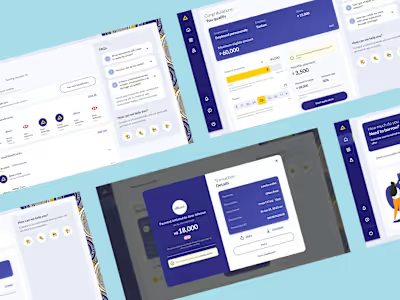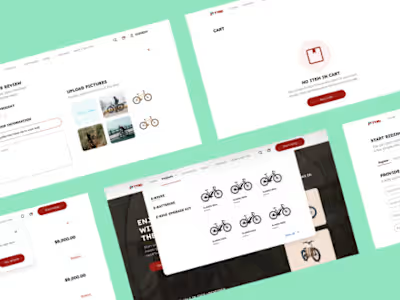UX Design for an open-source voting platform
THIS IS A DETAILED BREAKDOWN OF MY DESIGN PROCESS RANGING FROM RESEARCH TO TESTING THE FINAL PRODUCT, YOU WOULD GET MORE INSIGHT INTO HOW I THINK WHEN DESIGNING A DIGITAL EXPERIENCE FOR A PRODUCT.
INTRODUCTION
The most vital point in the history of a generation is the decision that is made, how that decision is made and the motivation behind such a decision, in knowing this, we realized that Open source could change a person’s approach and perspective in contributing to the system, delivering votes and making the right decisions. With a little bit of ownership, engagement and control which could serve as an incentive, a person could seize the opportunity to motivate everyone around them to also be a part of the movement and deliver votes for an election.
THE WHAT
23forObi is simply the delivering of votes at the grass-root level through a peer-to-peer connection and to achieve this, there was a need to make sure that the process is transparent, visible and recorded. The people delivering the vote needed to have the mindset of being in control of the process and also have the power to make things work. This process is vital because according to a typical Nigerian living in a village somewhere, without electricity, TV or radio to listen to their favourite candidates’ debate on the value they would bring once elected, the easiest way was to create a peer-to-peer communication format.
THE WHY
A lot of people in a rural area only get the right information or updates about a coming election from someone who is knowledgeable in that area and this has amounted to voters having a wrong impression on how to vote, or who to vote for. Partially this is a result of a limited understanding that the people's vote matters. The average Nigerian doesn’t believe that his or her vote matters, there’s a misconception that even after an election is carried out, it will be rigged. This has made a lot of Nigerians less enthusiastic about casting their votes, a lot would rather stay in their homes on election day rather than vote for a candidate of their choice.
THE HOW
We want a lot of people to have a chance to make a decision in the forthcoming 2023 election and in doing so, we created an open source project for electorates to deliver their votes. The idea lies in the number of voters who are willing to decide in each village within a state. Furthermore, every village has at least 200k+ residents and if one political party can have 25 (Twenty-five) of those numbers as a valid vote in each village, then there’s a tendency that the party would have the chance to win the election. That was the original hypothesis going into the project before we went live on the 3rd of September 2022.
THE APPROACH
We needed to understand what calibre of people we are introducing into the platform and also those who are interested in joining the movement, so we asked a series of questions to ascertain if they are interested in voting for Peter Obi, the people's preferred candidate.
Some of these questions ranged from:
If they have their PVC.
If they can be the person on the ground to educate other villagers on the importance of making the right decision.
The state, local government and village they are from.
THE DESIGNS
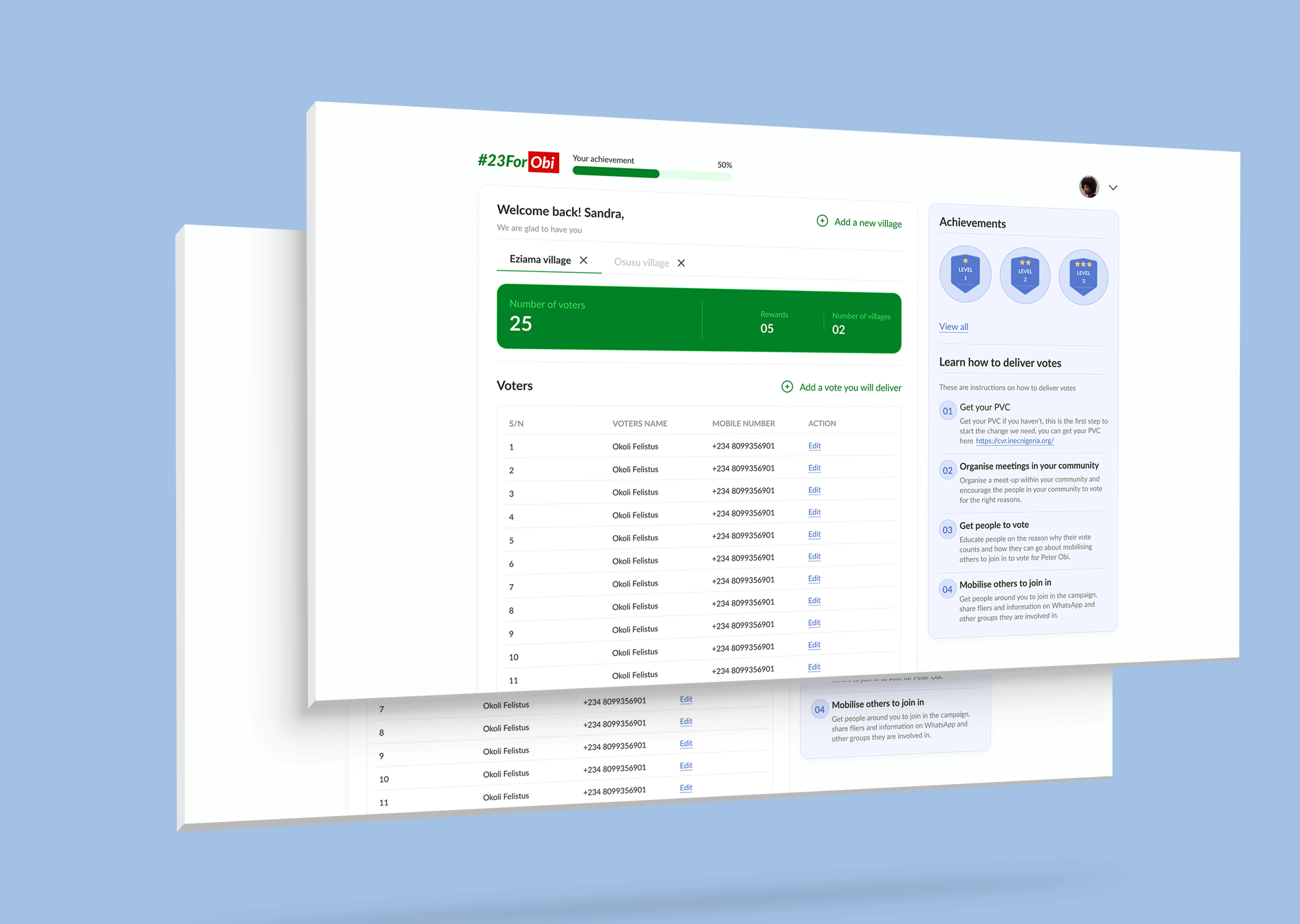
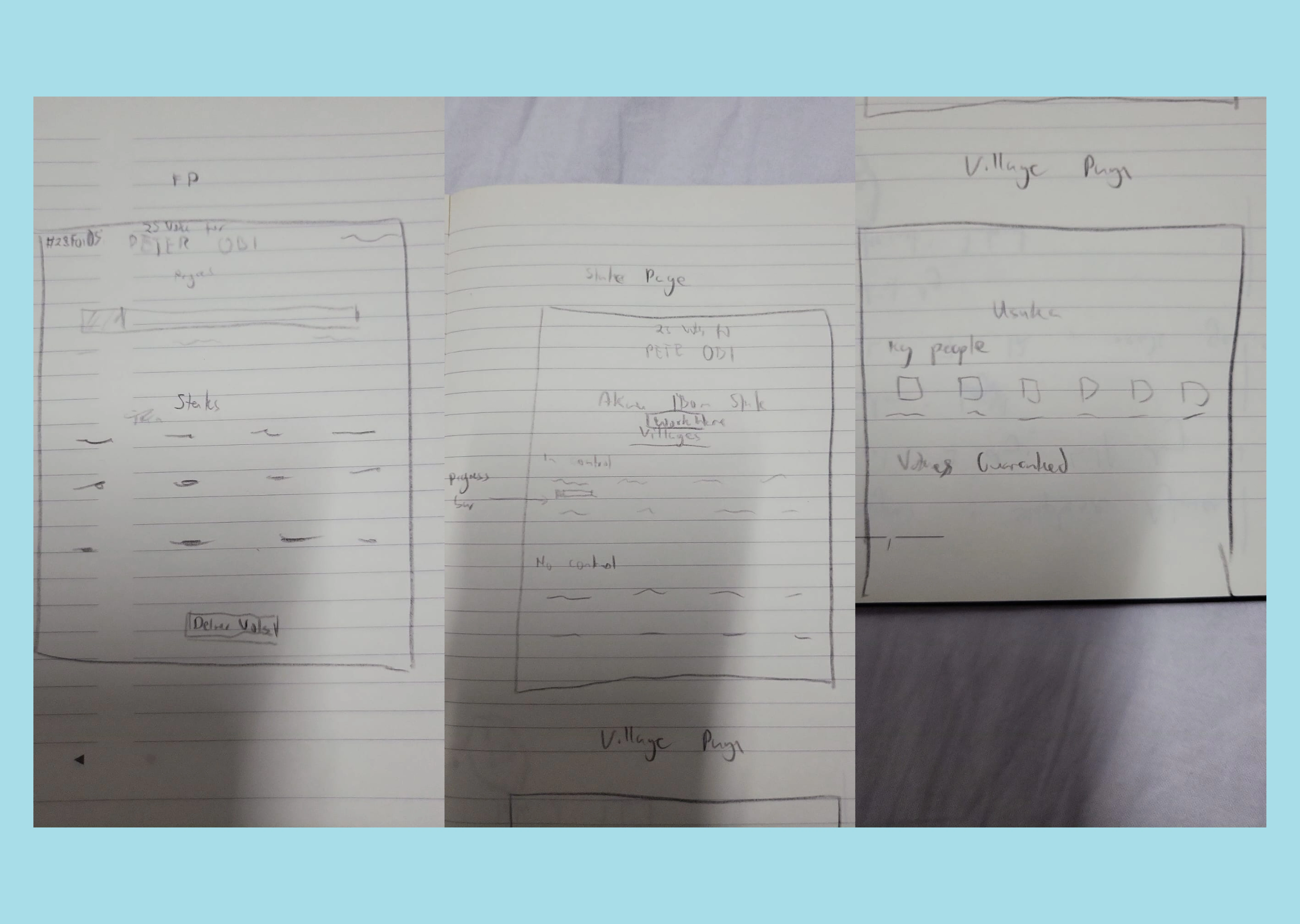
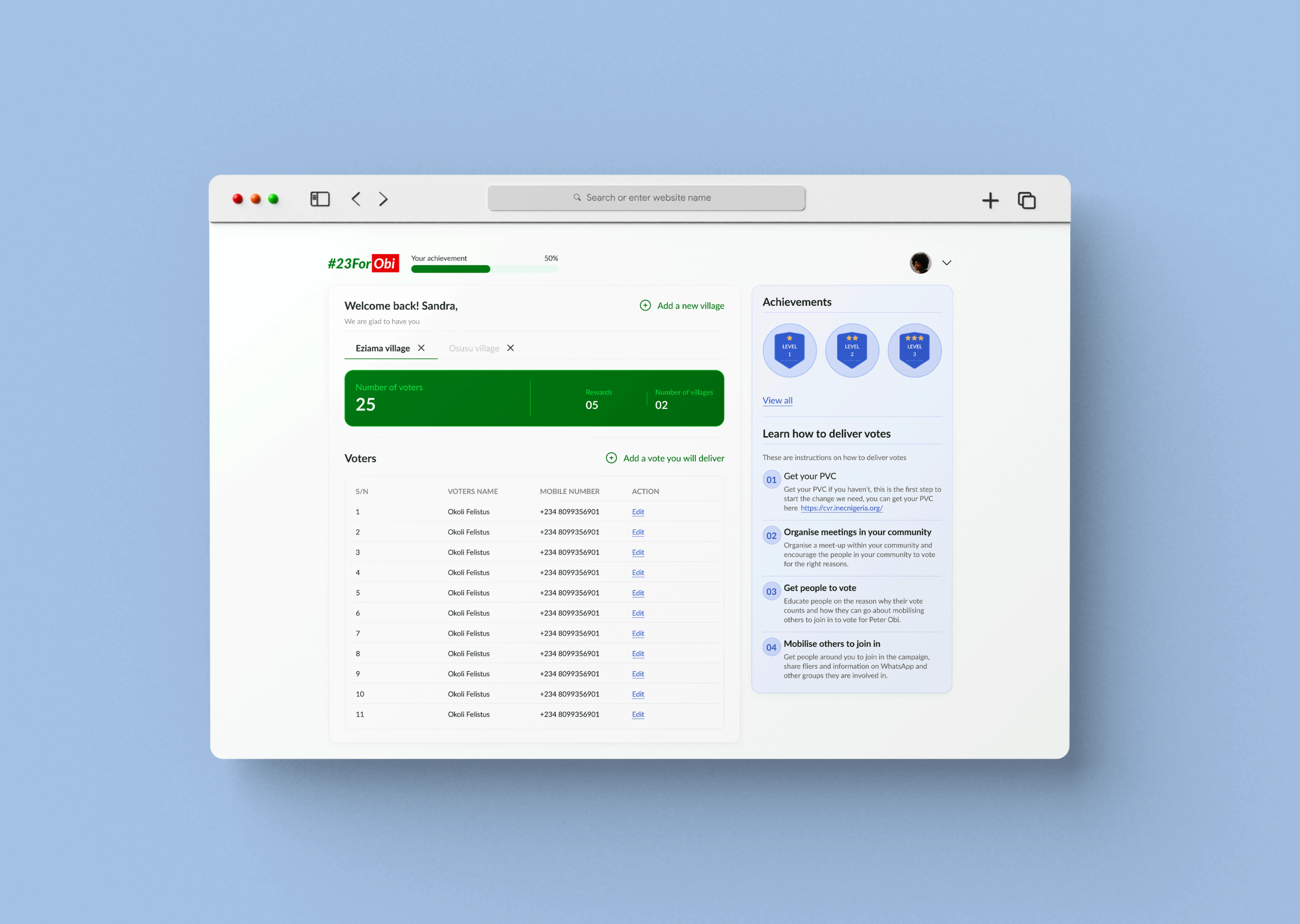
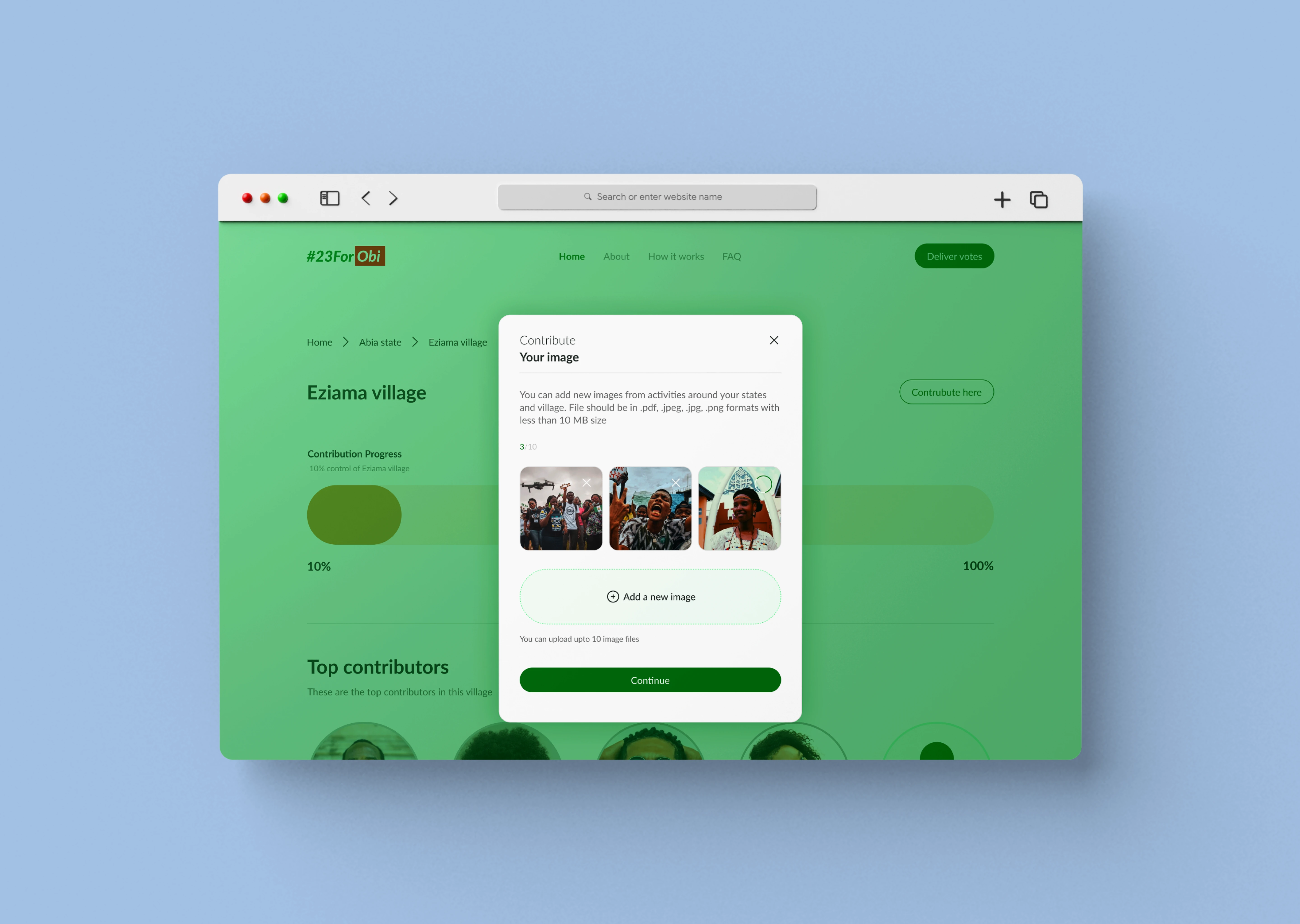
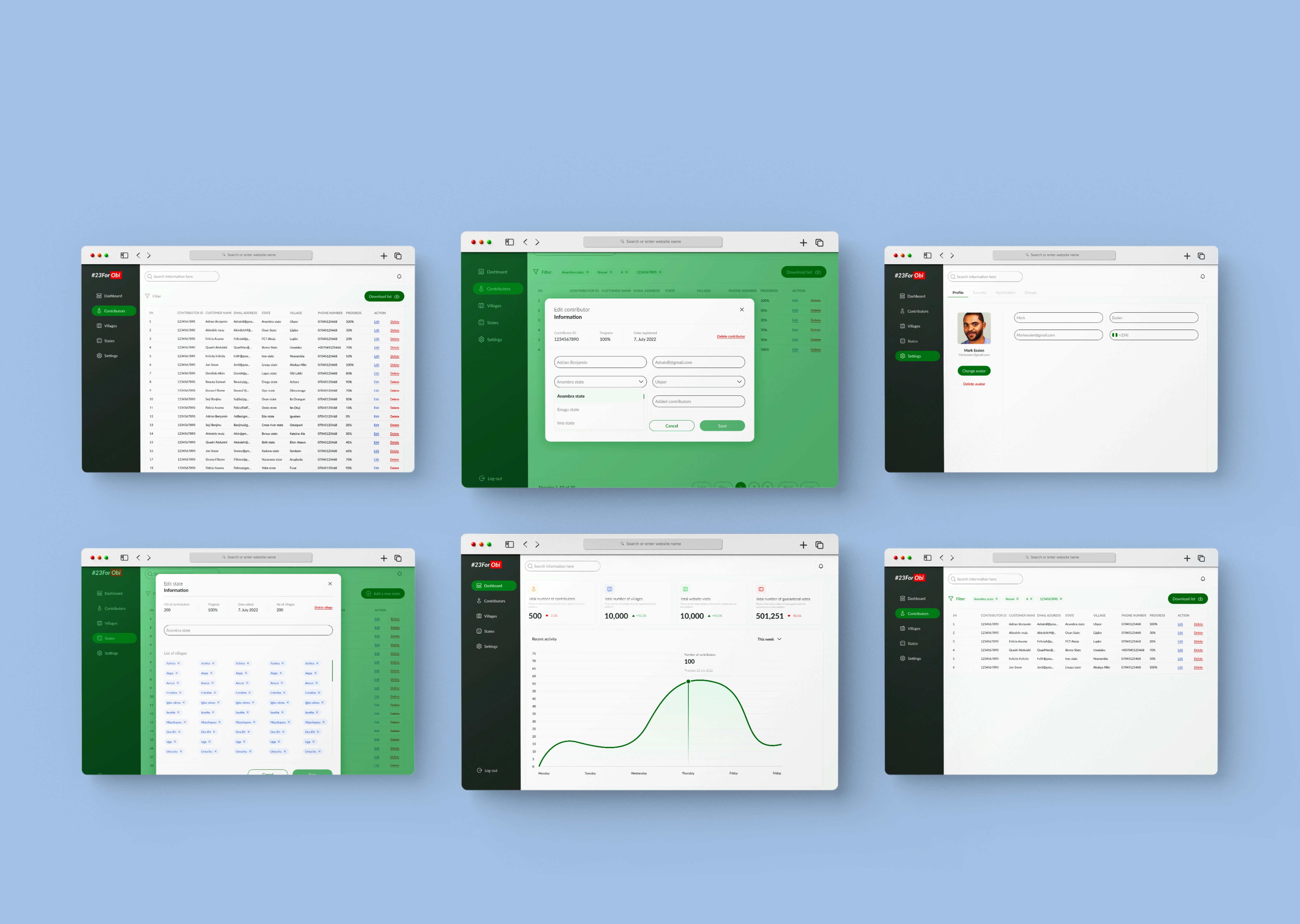
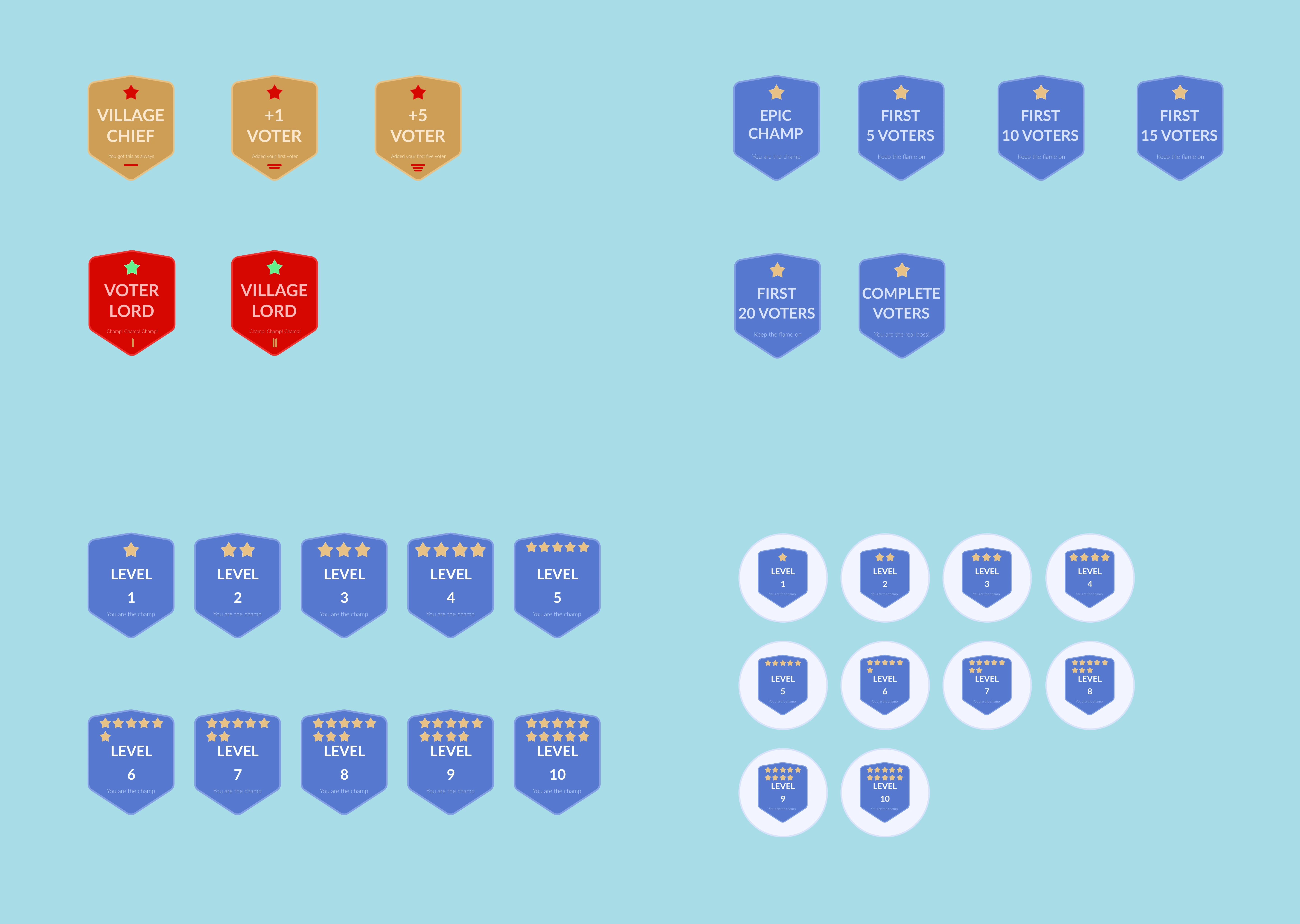
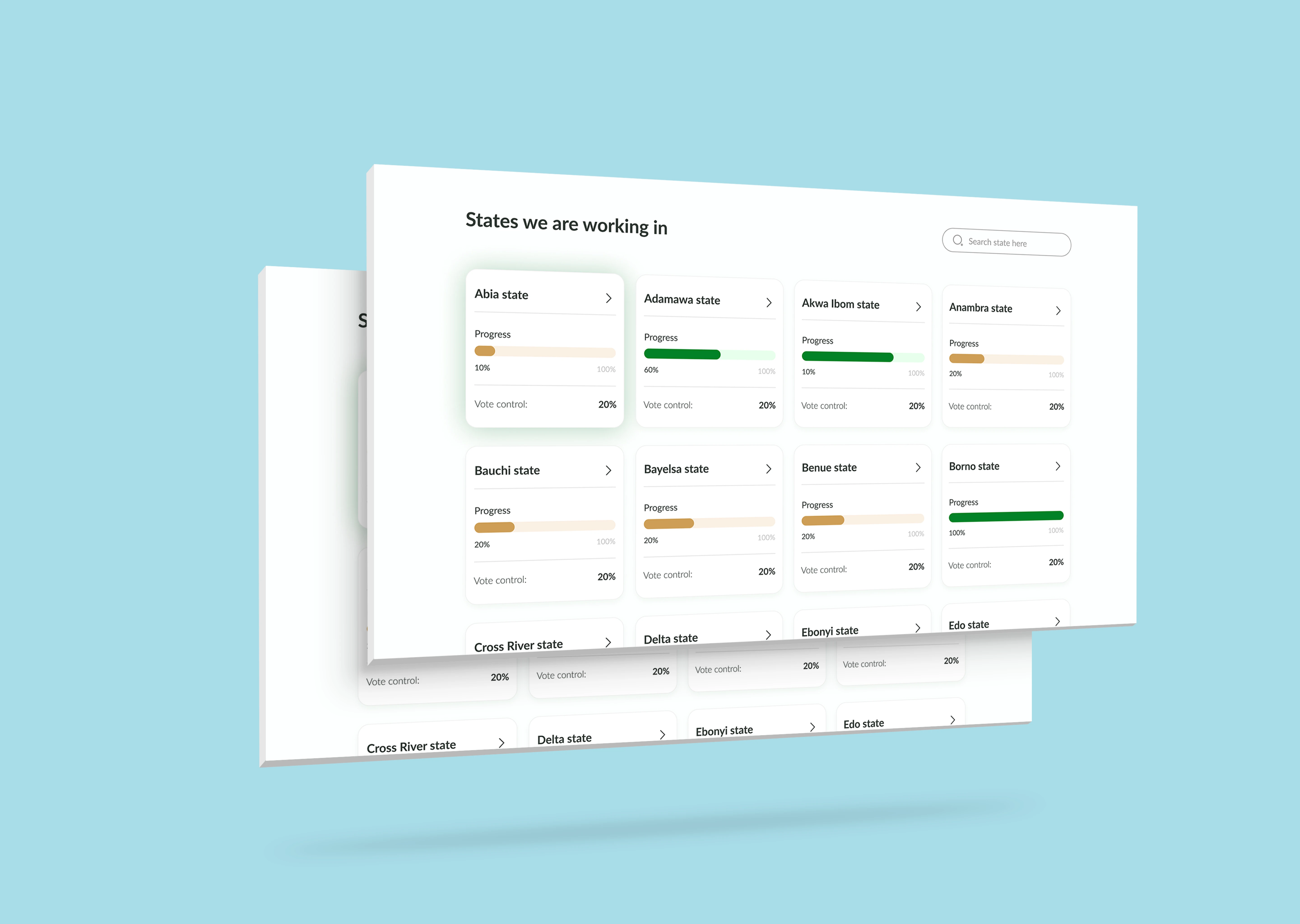
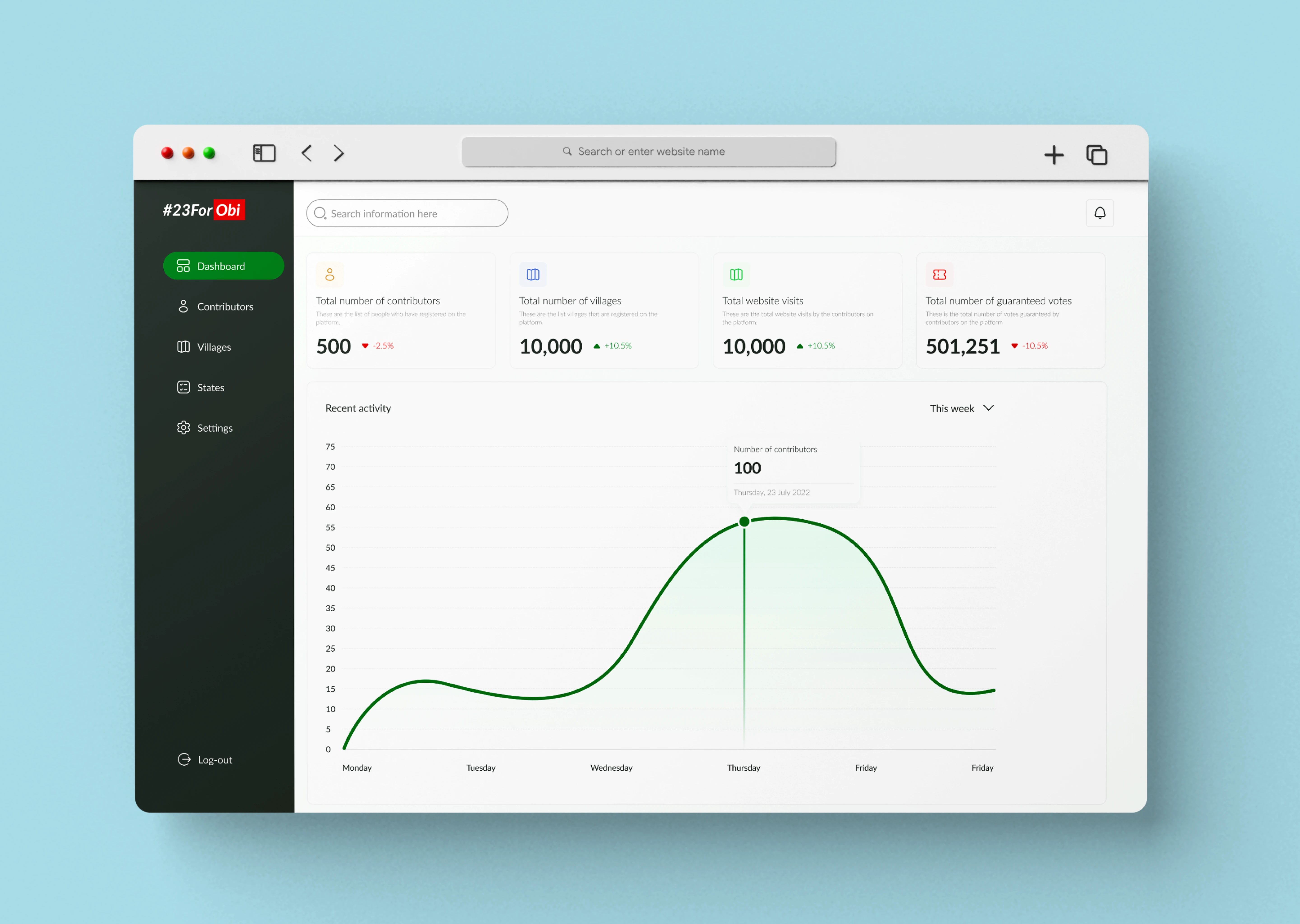
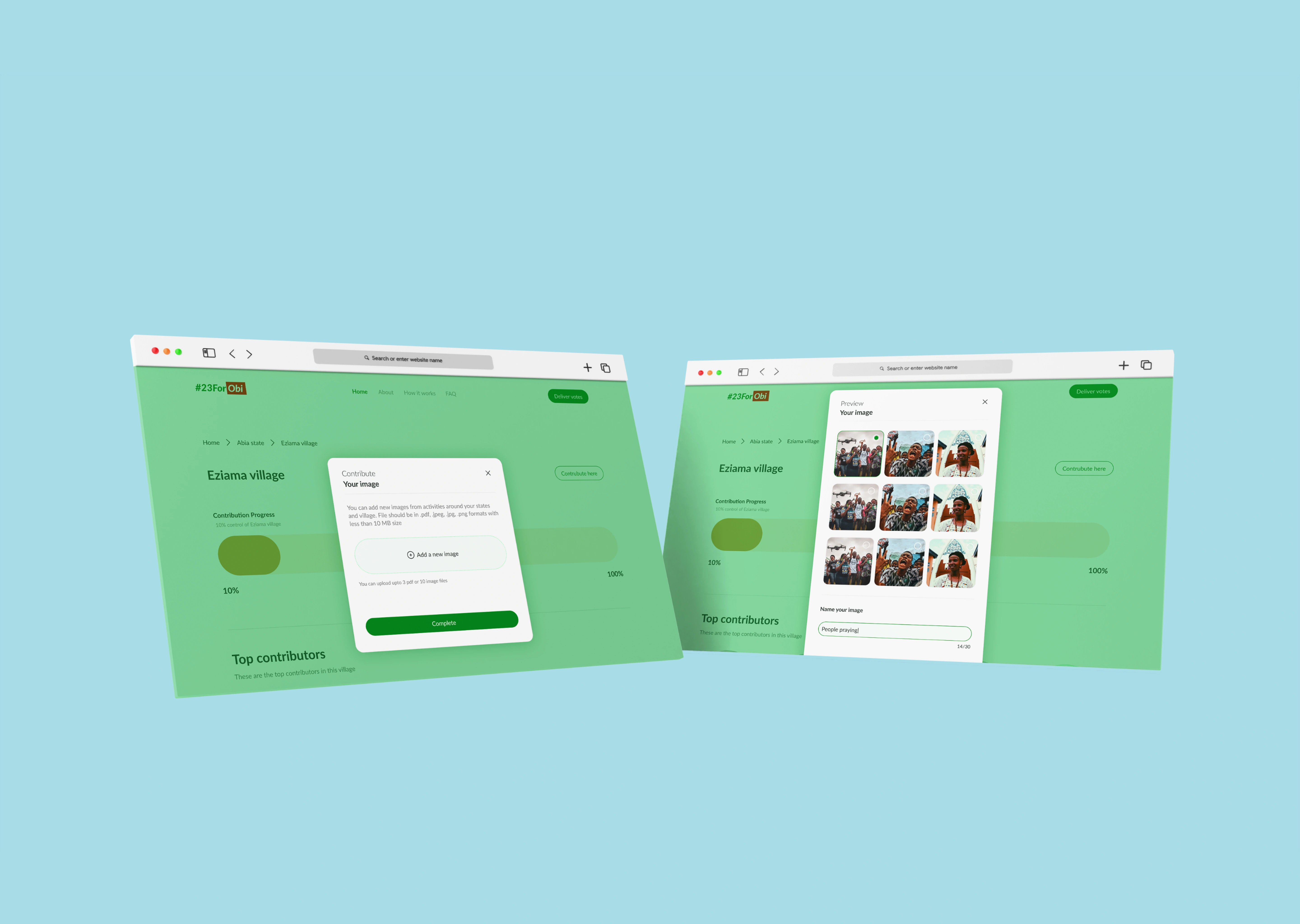
LEARNING AND NEXT STEP
The project is currently live and has attracted a total of 50 users, 71 voters and an additional 109 villages as of when I wrote this case study.
This project made me realize the complexity of getting accurate data in Nigeria, this was evident when it was time to implement the villages feature, the data was scarce, so we had to make it open for users to enter their respective villages on their own without any assistance from the design perspective with a lot of room for errors and wrongly typed villages, but then, we thought about who would really know where they are from other than the users.
I learned the constraint in development efforts and how design can help in creating a more seamless process and a user-centred product.
The next step is to monitor how users use the product, consider the metrics of the product by the way users interacted and engage with it through the admin dashboard while taking feedback to ideate and execute based on the user feedback.
Like this project
Posted Aug 15, 2023
This platform gives voters the freedom and ability to deliver votes at the grassroot level through peer-to-peer connection and interaction.





